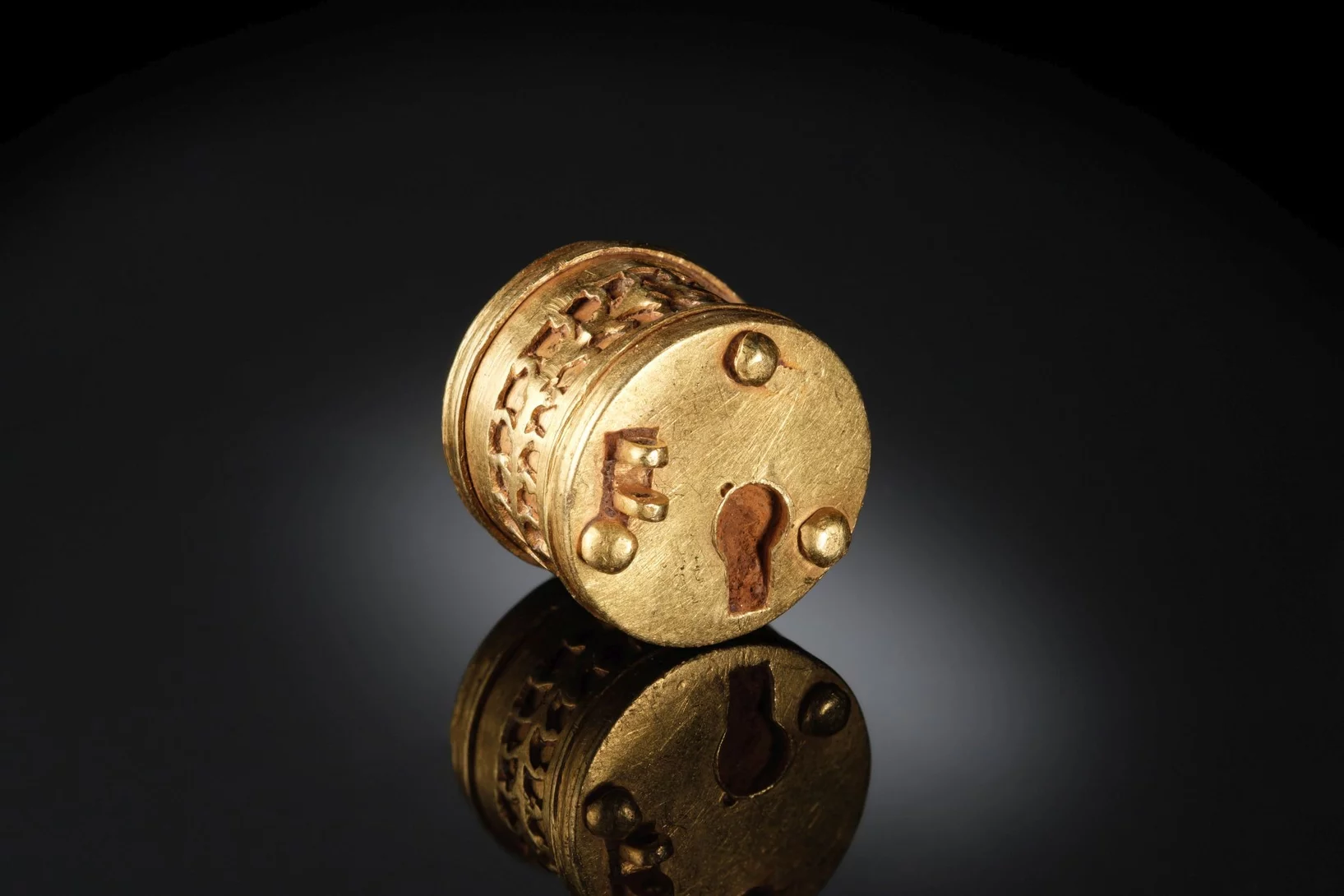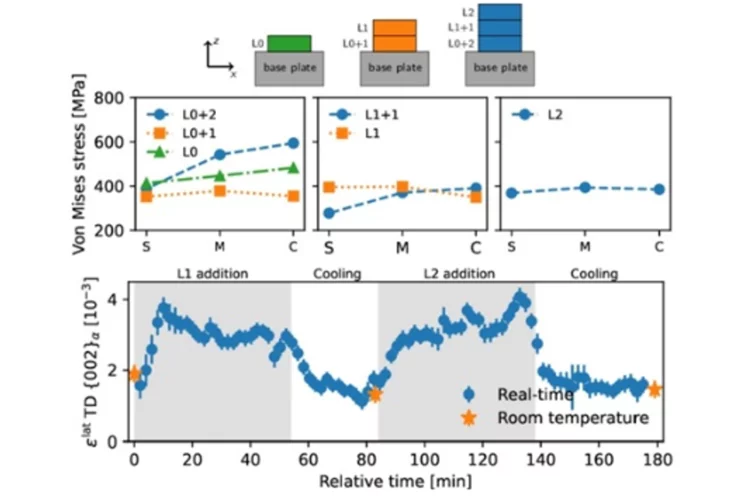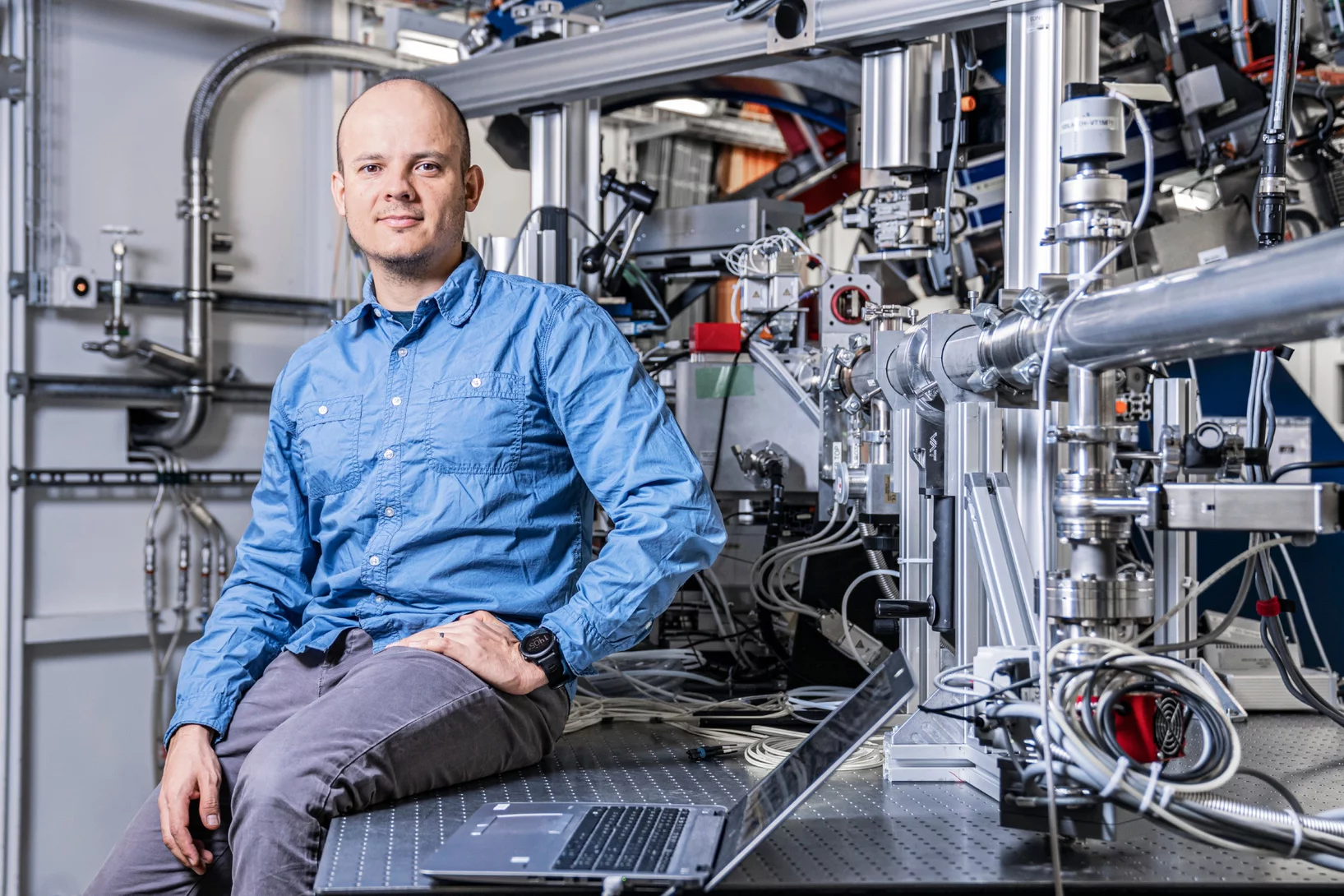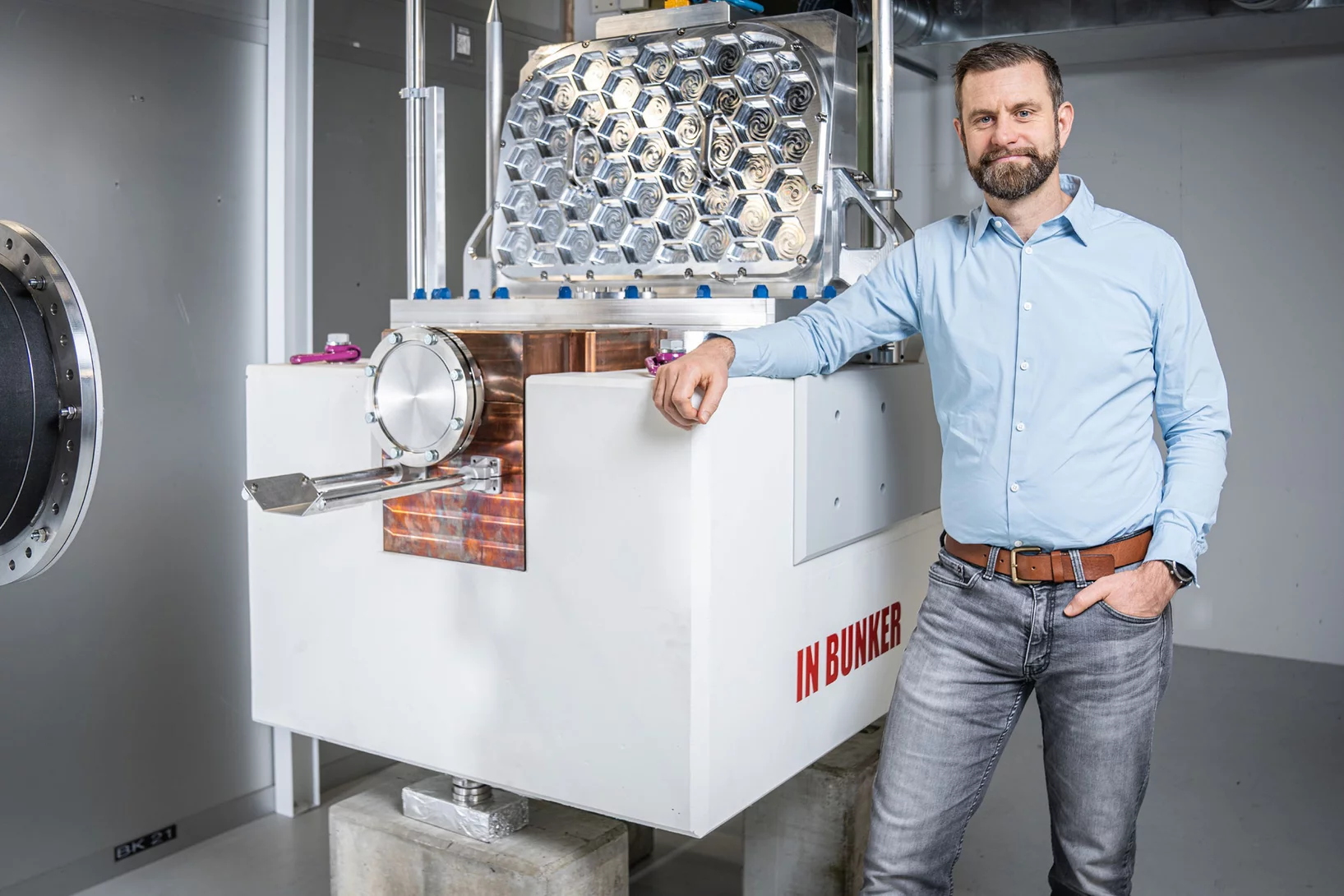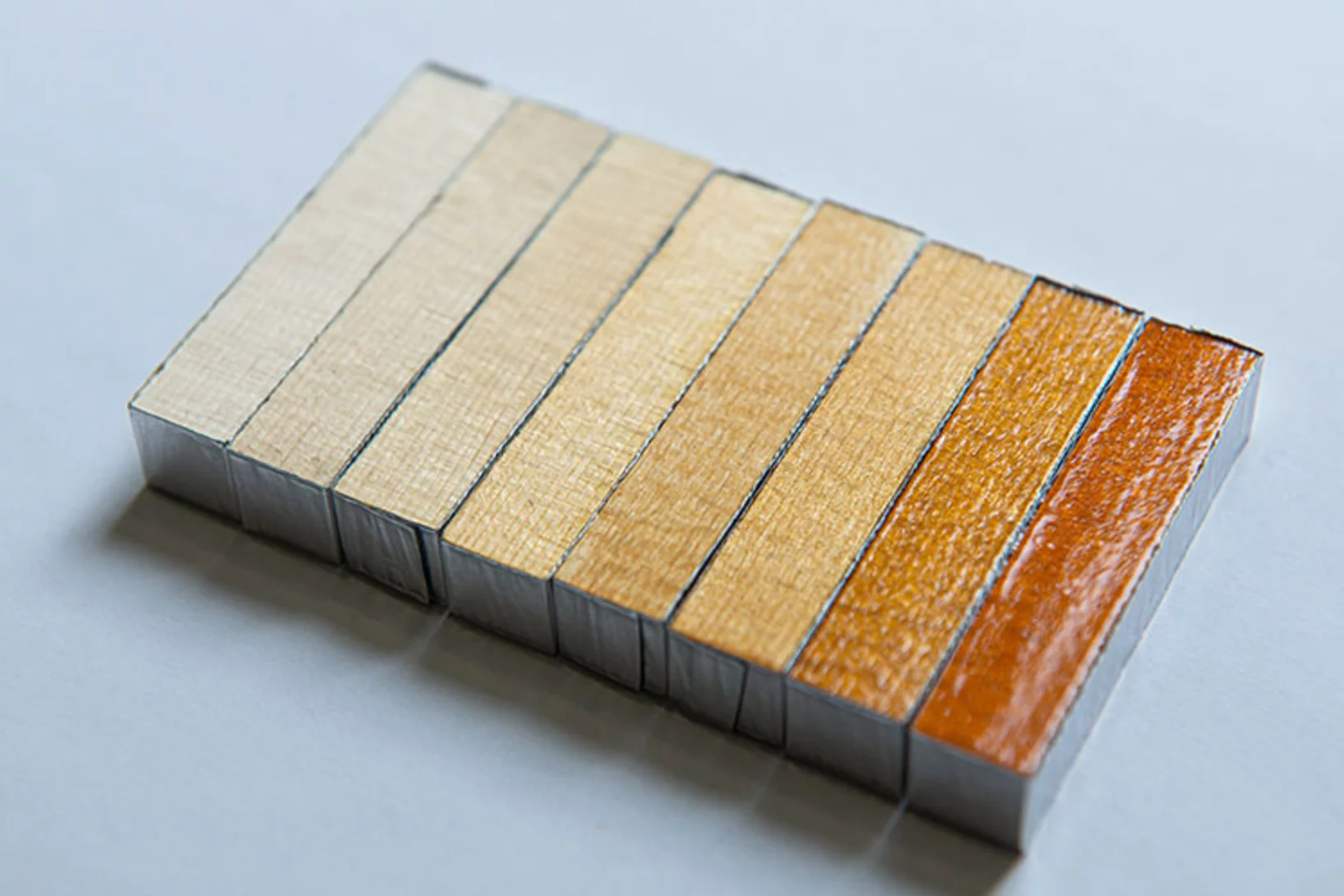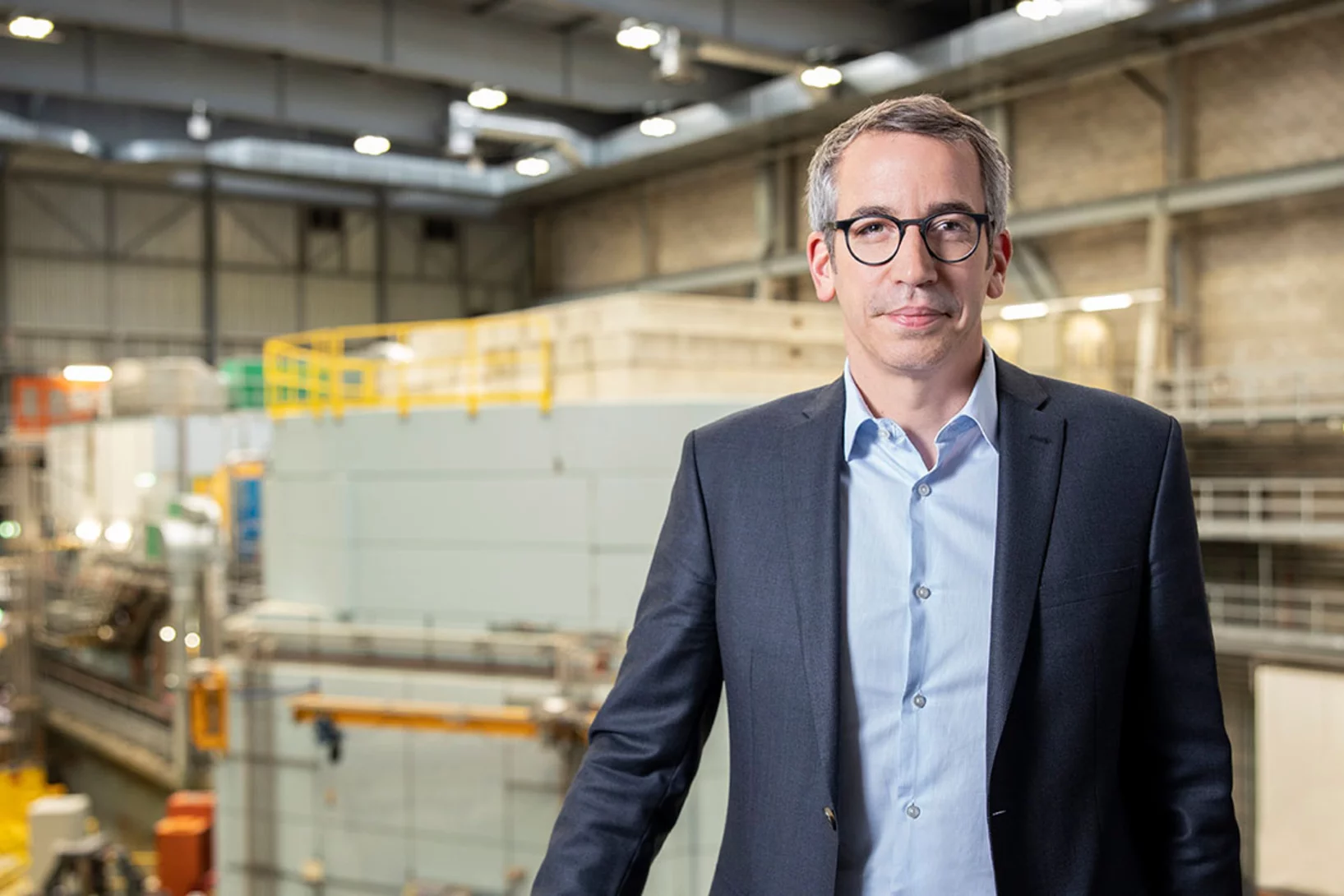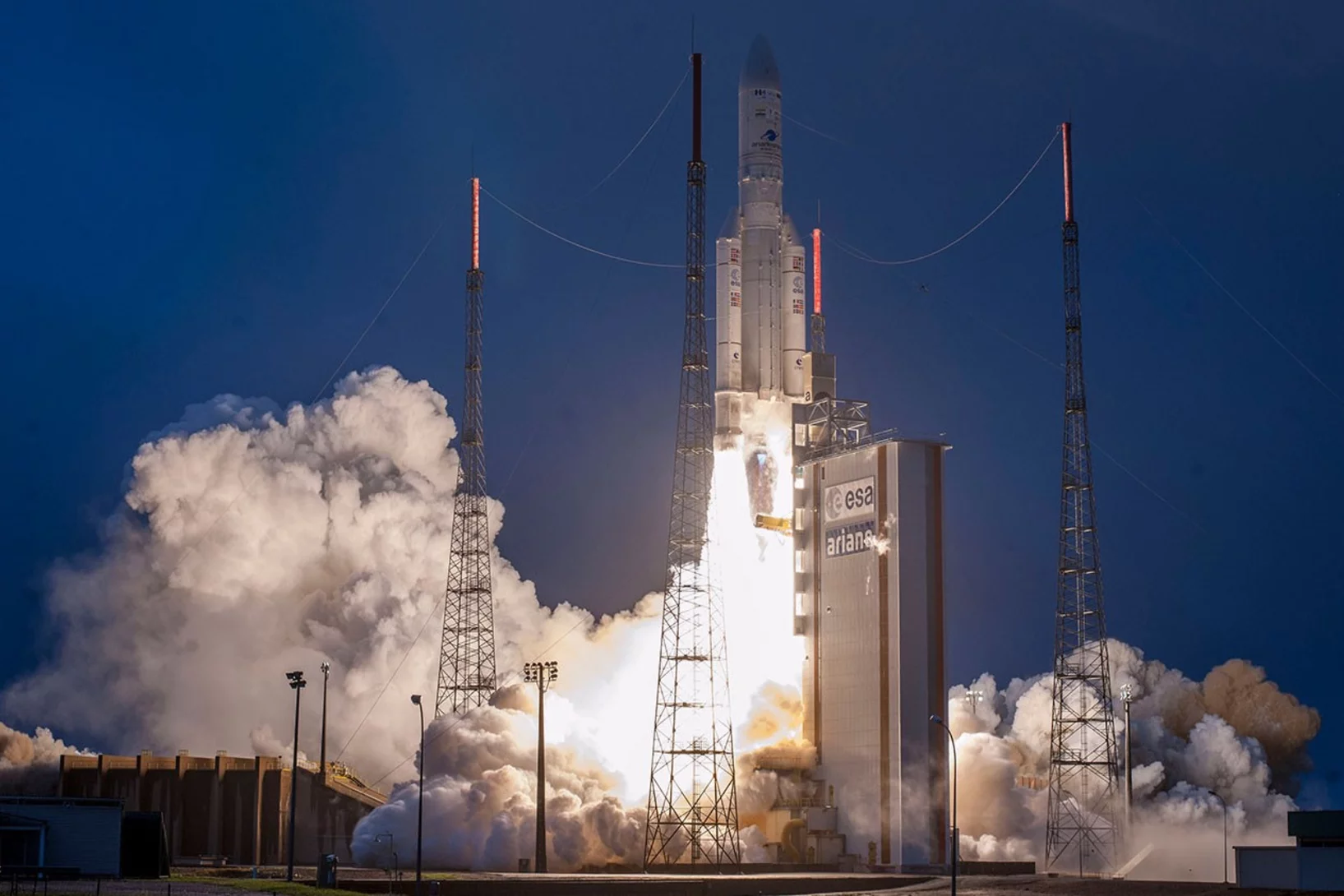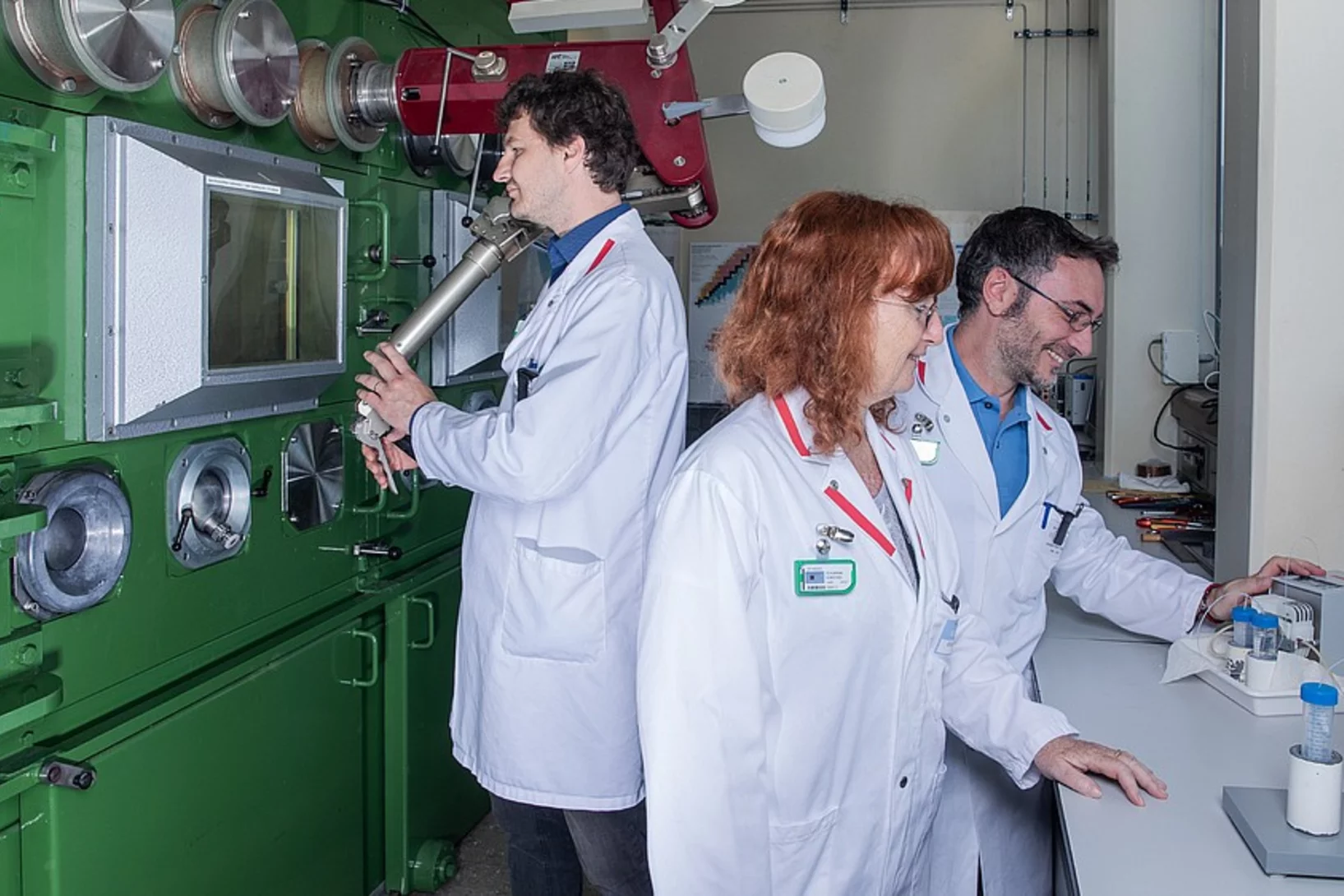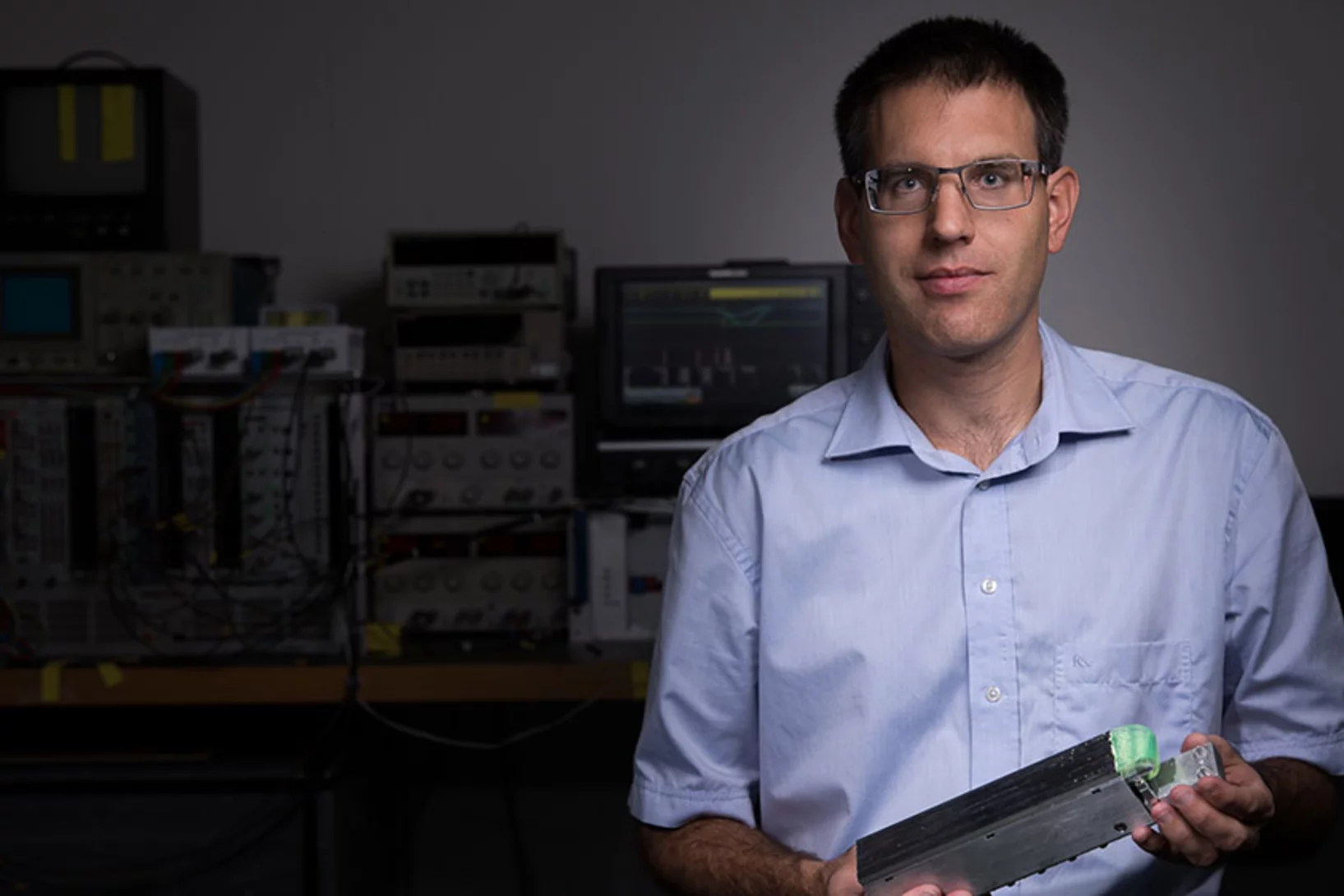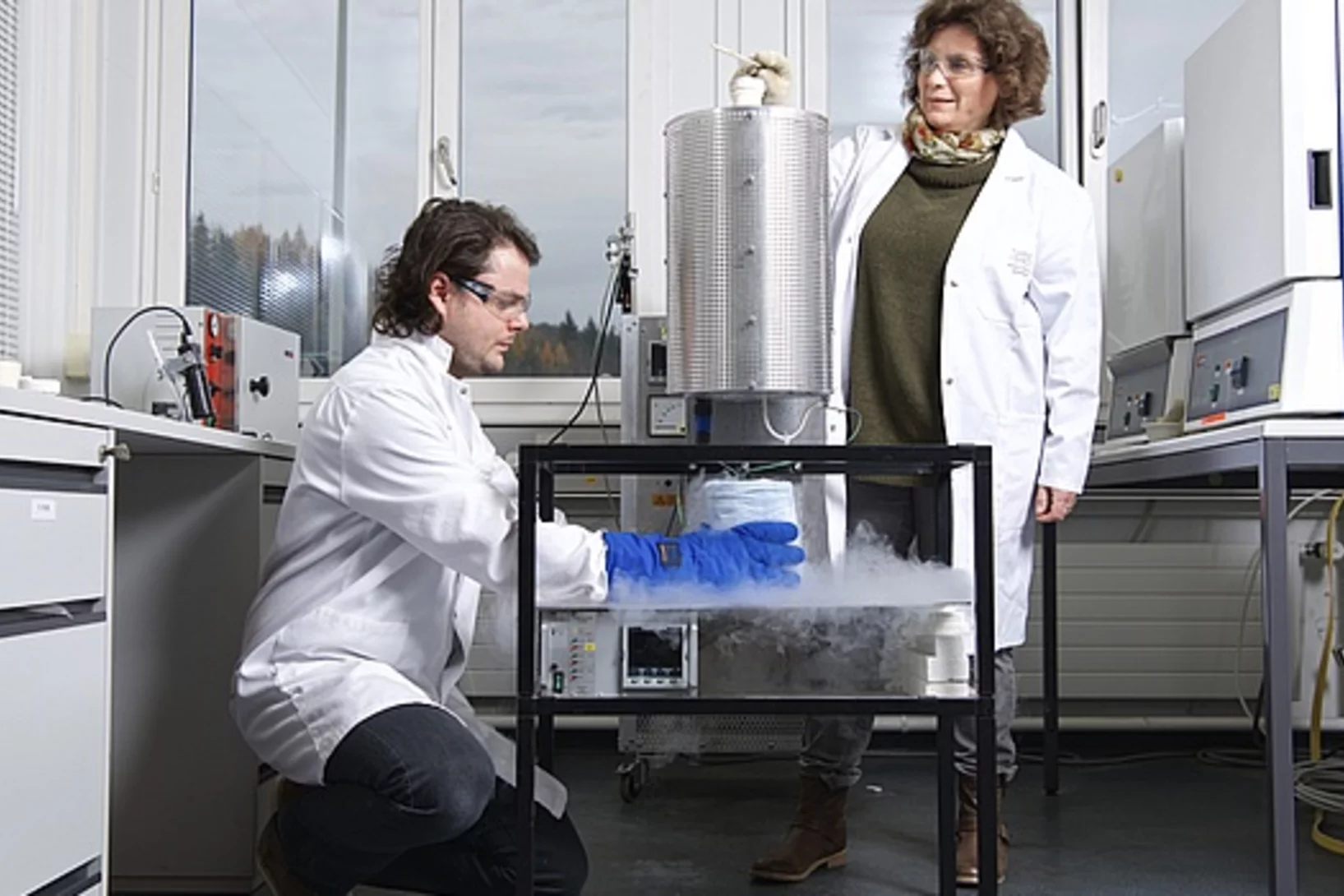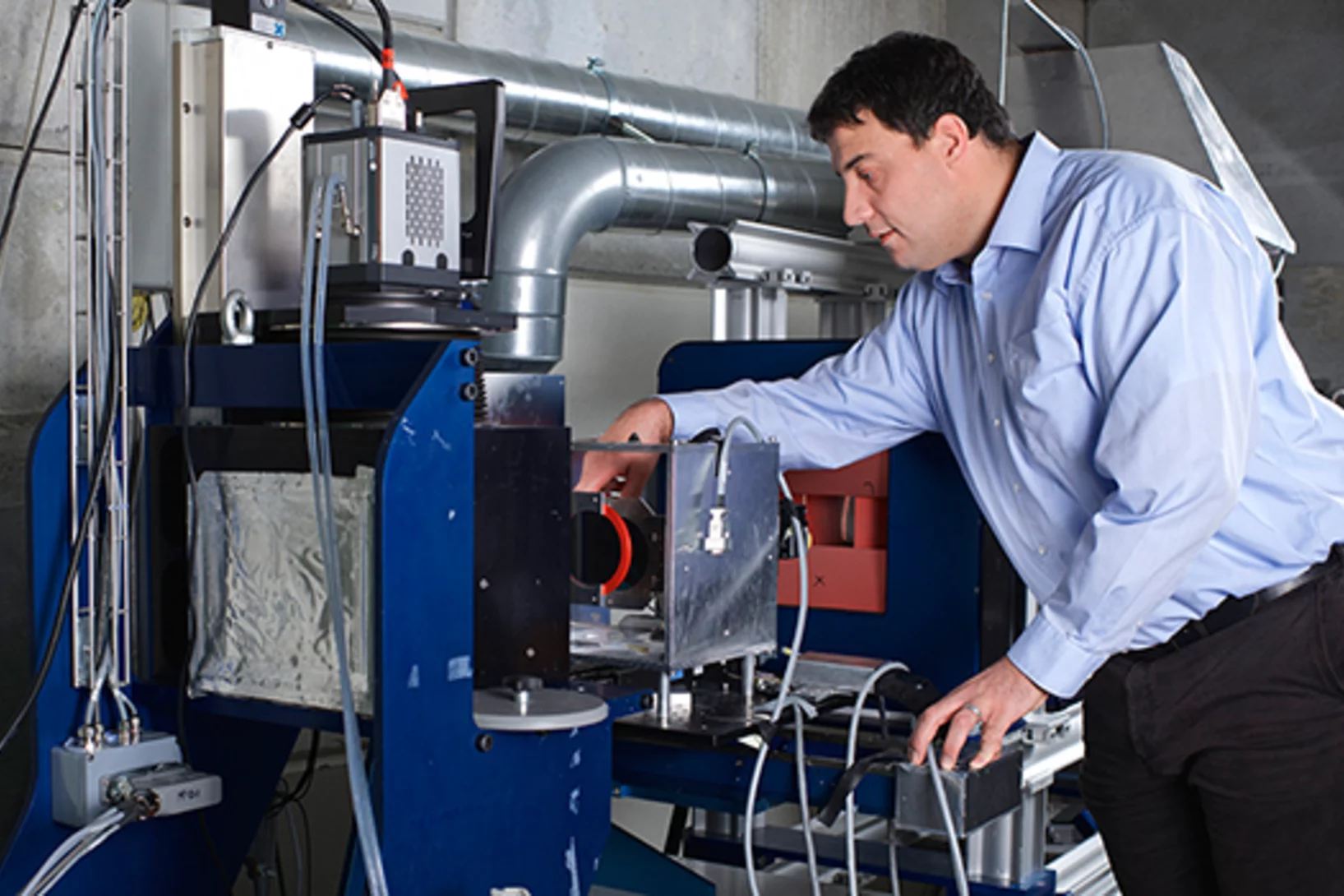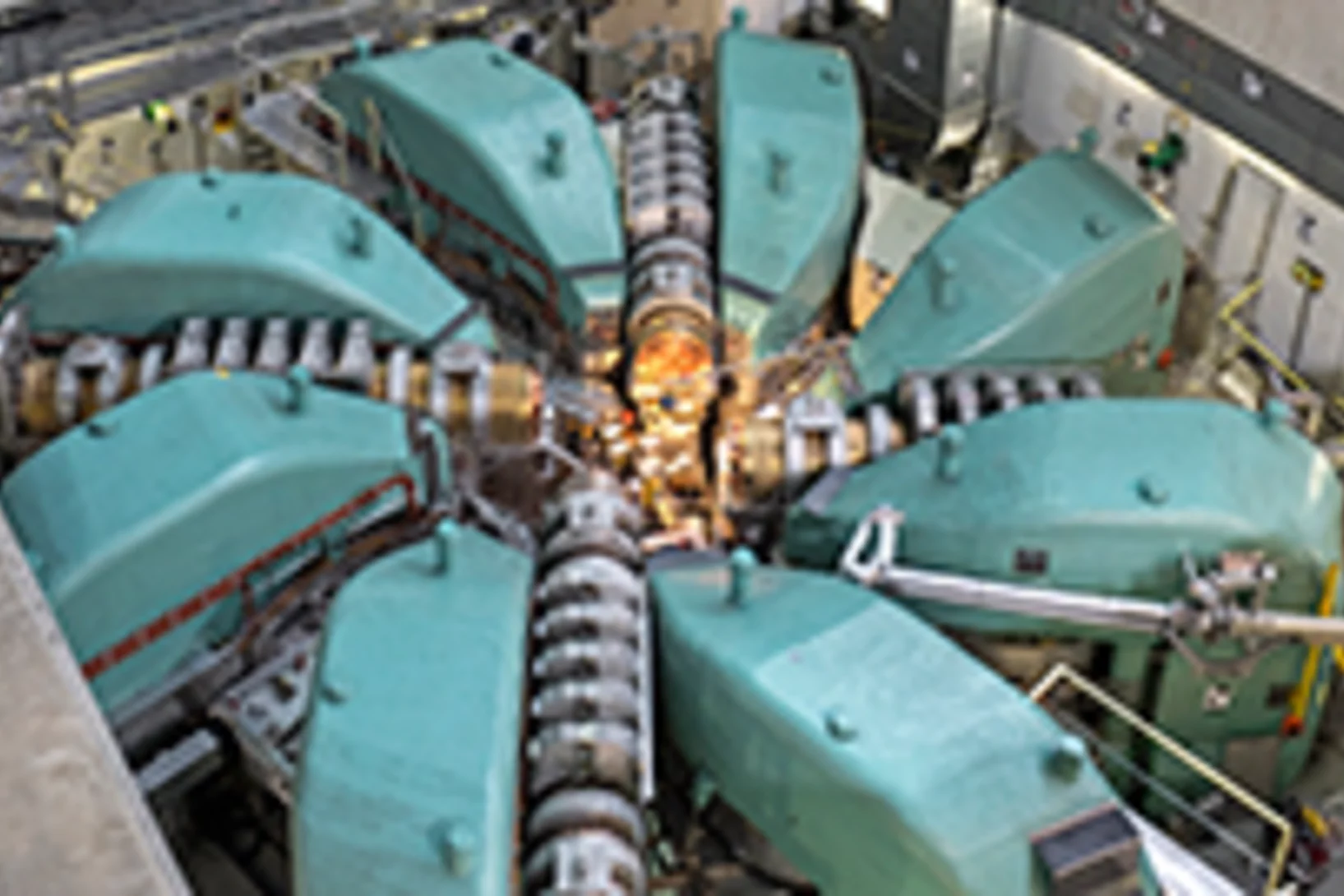Show filters
Steering magnetic textures with electric fields
Neutrons reveal a new way to control magnetism at the nanoscale
A tiny golden object from Roman times
PSI’s David Mannes has used neutrons to unravel the mystery of a fascinating archaeological artefact.
Prestigious funding for research at PSI
Concrete, chemical catalysis and the search for new physics – three PSI researchers have each received a grant from the Swiss National Science Foundation for these areas of research.
Texture and residual stress evolution during 3D printing
Discover how advanced neutron diffraction sheds light on the evolution of stress and texture in 3D-printed duplex stainless steel.
Together for Science with Neutrons, Muons and X-rays
Strategic partnership between research facilities in UK and Switzerland will create new capabilities to address global challenges using neutrons, muons and X-rays.
Making powerful lithium-air batteries suitable for everyday use
Chemical processes in lithium-air batteries revealed using neutron beams and synchrotron light.
Cause of clogged hypodermic needles discovered
Researchers at PSI and the ANAXAM technology transfer center have found the cause of clogging in prefilled syringes.
Dichotomous Electrons: Travelling without Moving
Neutron scattering experiments give new understanding of how localized and free-flowing electrons collaborate to create material functionality.
Better batteries for electric cars
PSI researchers make physical and chemical changes in batteries visible.
Mystery of microgels solved
Researchers at PSI and the University of Barcelona can explain the strange shrinking of microgels experimentally.
Further optimising car brakes
Research scientists at PSI and ANAXAM use neutrons to look inside brake callipers and identify potential ways of reducing CO2 emissions.
Thinking in different time frames
Marc Janoschek explains the significance of PSI’s involvement in the European Spallation Source.
Waves on circular paths
Energy-efficient alternative to information transmission with electric current
The world’s most powerful neutron microscope
PSI scientists help construct the new European Spallation Source ESS
3D view: the Swiss Spallation Neutron Source SINQ
What are neutron guides and what is liquid deuterium used for at SINQ? Our 3D graphic of the Swiss neutron spallation source SINQ provides insights.
Novel and emerging medical radionuclides
Better treatment for disseminated cancer.
Nanostructures with a unique property
Researchers at the Paul Scherrer Institute PSI have for the first time identified special nano-vortices in a material: antiferromagnetic skyrmions.
Tracking down the mystery of matter
At the ultracold neutron source at PSI, researchers have measured a property of the neutron more precisely than ever before: its electric dipole moment. That's because the search is still on for an explanation of why, after the Big Bang, there was more matter than antimatter.
Well varnished violins play longer
Traditionally, violins are varnished to protect them from humidity and other environmental influences. At PSI, a scientific team has investigated how different coatings affect the instrument. Under no circumstances, they found, should anyone try to do without varnish completely.
Radionuclides for cancer therapy are in great demand
Radionuclides open up new options for treating cancer. Christian Rüegg, head of the Research with Neutrons and Muons Division at PSI, explains the significance of the Swiss Spallation Neutron Source SINQ at PSI.
Cancer medicine using PSI’s neutron source
At the neutron source SINQ, PSI researchers are producing special radionuclides that aid in the development of new and more effectively targeted cancer therapies. In this they collaborate closely with the clinics in the surrounding area.
A hand like no other
A 3,500-year-old bronze sculpture is being examined at PSI's SINQ neutron source. This will enable conservators to get a unique view into the interior of the sensational find – and gain insights into how it was made.
Visualising strong magnetic fields with neutrons
For the first time, PSI researchers have used neutrons to visualise very strong magnetic fields that are up to one million times stronger than Earth's magnetic field. This now makes it possible to study magnets that are already installed in devices such as magnetic resonance tomography systems or alternators.
PSI imaging helps with rocket launches
PSI researchers are helping the European space program: Their neutron imaging serves to ensure the quality of critical components for rocket launches.
Cladding tubes and their properties
In the Nuclear Energy and Safety Research Division at PSI, Johannes Bertsch focuses on the so-called cladding tubes that are used in nuclear power plants.
EU grants 14 million to Swiss Researchers
A team with three researchers from the ETH Domain has been awarded a prestigious EU grant. Today, they received the contract signed by the EU confirming the extraordinary 14 million euros funding. With it, they will investigate quantum effects which could become the backbone of future electronics.
Making the impossible possible
Use of multiferroic materials promises more energy-efficient computers because in these, an electric field would suffice to achieve magnetic data storage. Researchers at PSI have now made such a material suitable for computer operating temperatures.
Material from PSI helps to check inconsistencies in the Big Bang theory
Shortly after the Big Bang, radioactive Beryllium-7 atoms were formed, which today, throughout the universe, they have long since decayed. A sample of beryllium-7 artificially produced at PSI has now helped researchers to better understand the first minutes of the universe.
Imaging the inside of injection needles with neutrons
Researchers from the Paul Scherrer Institute PSI, the University of Basel and Roche have used neutron imaging to investigate why cool storage is crucial for syringes pre-filled with a liquid medication.
Imaging at Paul Scherrer Intitute helps to increase production at ABB site in Aargau
The ABB facility in Wettingen got practical recommendations on increasing production of ceramic components. Researchers at the Paul Scherrer Institute PSI examined the components by means of neutron imaging. With the help of these images, ABB employees were able to see where there is still potential for process optimisation. This feasibility study was funded by the Hightech Zentrum Aargau.
More than a prototype
Jean-Baptiste Mosset, winner of a Founder Fellowship at the Paul Scherrer Institute PSI, wants to commercialise a neutron detector to spot plutonium and uranium.
Still no sign of dark matter
No evidence of dark matter made of axions – result of an experiment at the Paul Scherrer Institute PSI further constrains theories about the nature of dark matter.
From golden emperor to filled Buddha
Ancient metal objects are illuminated by neutrons at the Paul Scherrer Institute PSI. This enables researchers to discover what is hidden inside them, how they were made and how they can be preserved.
X-ray and neutron imaging for palaeontologists and archaeologists
Federica Marone illuminates objects with high-intensity X-ray beams, Eberhard Lehmann with neutrons. Both have used their methods to give palaeontologists and archaeologists a new view into the past.
From the garage to the world
In 1999, PSI researchers founded the spin-off firm SwissNeutronics. Today the company has a staff of 15, sells high-precision components to research institutions all over the world, and still is based in the small town of Klingnau – not far from PSI.
Successful for 20 years: Probing materials with particles
Whether they study materials for the electronics of the future, batteries, or swords from the Bronze Age — for 20 years researchers from a range of disciplines have been using the Swiss Spallation Neutron Source SINQ of the Paul Scherrer Institute PSI for their investigations. At a symposium on 18 April, researchers looked back on the facility's successes and presented plans for modernisation.
Towards energy-saving data storage
A new material could become the basis for future data storage devices, since it may enable significant reductions in energy demands in comparison to present-day hard drives. It is a material from the class of so-called magnetoelectric multiferroics, exhibiting the necessary magnetic properties even at room temperature.
ERC funding of €2.4 million for research on fundamental interactions in magnets
Christian Rüegg has been awarded a prestigious Consolidator Grant from the European Research Council (ERC). With this funding he will continue to investigate how the smallest magnetic building blocks of matter interact.
En route to better transformers
Thanks to an ultramodern research method, scientists have successfully looked inside transformers and observed the magnetic domains at work in the interior of a transformer’s iron core. Transformers are indispensable in regulating electricity both in industry and in domestic households. The current research results show that the new examination method can be profitably applied to develop more efficient transformers.
Zebra - a new instrument for the PSI
Interview with Oksana ZaharkoNew scientific questions demand ever better experimental equipment. In this interview, PSI researcher Oksana Zaharko reports on the challenges of setting up a new instrument for research with neutrons.
Neutrons reveal distribution of flux-tube islands
Usually, superconductors expel magnetic fields. In type II superconductors, however, thin channels – so-called flux tubes – are formed. The magnetic field is guided through these tubes while the rest of the material remains field-free and superconducting. In the metal niobium, the flux tubes bunch together into small islands that create complex patterns similar to those found in other fields of nature. A team of researchers from PSI and TU München were the first to conduct neutron experiments to study these patterns in niobium and determine the distribution of the islands in detail.
New method will enable most accurate neutron measurement yet
Our universe consists of significantly more matter than existing theories are able to explain. This is one of the great puzzles of modern science. One way to clarify this discrepancy is via the neutron’s so-called electric dipole moment. In an international collaboration, researchers at PSI have now devised a new method which will help determine this dipole moment more accurately than ever before.
Foundation Stone Ceremony Marks Scientific Importance of ESS
Today, several hundred members of the European scientific community gathered at the European Spallation Source (ESS) construction site in Lund, Sweden, for the ESS Foundation Stone Ceremony. The event was held to lay the foundation’ both for the new facility, which has recently begun construction, and for a new generation of science in Europe.
Ice in fuel cells imaged directly for the first time
Researchers from the Paul Scherrer Institute (PSI) have succeeded in imaging the distribution of frozen and liquid water in a hydrogen fuel cell directly for the first time. They applied a new imaging technique that uses successively two beams with different neutron energies to distinguish between areas with liquid water and those with ice extremely reliably. The method therefore opens up the prospect of studying one of the main problems of using fuel cells to power vehicles: ice can clog the pores in the fuel cells and affect their performance. The PSI scientists’ results will be published in the journal Physical Review Letters on 16 June 2014.
New insight into photosynthesis
The way that algae and plants respond to light has been reinterpreted based on results from recent experiments. Under particular lighting conditions during photosynthesis, the well-ordered stacking and alignment of light-sensitive membranes in the algae are disrupted. There is no significant movement of the membrane embedded light harvesting proteins, which rather become largely inactive. These new findings challenge widely accepted views of how algae respond to light where the light harvesting proteins were thought to move around the membranes.
Quantum melting
Changes to the aggregate state triggered by quantum effects à in physically correct terms, quantum phase transitions à play a role in many astonishing phenomena in solids, such as high-temperature superconductivity. Researchers from Switzerland, Great Britain, France and China have now specifically altered the magnetic structure of the material TlCuCl3 by exposing it to external pressure and varying this pressure. With the aid of neutrons, they were able to observe what happens during a quantum phase transition, where the magnetic structure melts quantum-physically.
The proton accelerator at the Paul Scherrer Institute: forty years of top-flight research
Materials research, particle physics, molecular biology, archaeology à for the last forty years, the Paul Scherrer Institute’s large-scale proton accelerator has made top-flight research possible in a number of different fields.
Superconductivity switched on by magnetic field
Superconductivity and magnetic fields are normally seen as rivals à very strong magnetic fields normally destroy the superconducting state. Physicists at the Paul Scherrer Institute have now demonstrated that a novel superconducting state is only created in the material CeCoIn5 when there are strong external magnetic fields. This state can then be manipulated by modifying the field direction. The material is already superconducting in weaker fields, too. In strong fields, however, an additional second superconducting state is created which means that there are two different superconducting states at the same time in the same material.


